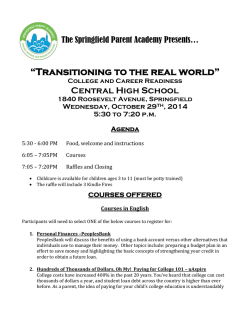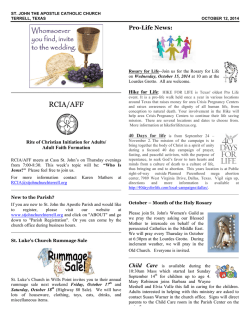
Caracterización del perfil de inmunohistoquímica de la matriz
UNIVERSIDAD AUTÓNOMA DE CHIHUAHUA FACULTAD DE ODONTOLOGÍA “Caracterización del perfil de inmunohistoquímica de la matriz extracelular, vascularización y del infiltrado inflamatorio en mucoceles orales (quiste de extravasación mucosa).” PARA OBTENER EL TÍTULO DE MAESTRÍA EN ESTOMATOLOGÍA PEDIÁTRICA PRESENTA: SORAYA SEAÑEZ MONTAÑEZ NOMBRE DEL ASESOR DR. GUILLERMO MARTÍNEZ MATA DR. HUMBERTO MONREAL ROMERO DRA. ROSAURA PACHECO SANTIESTEBAN CHIHUAHUA, CHIH. JUNIO DEL 2014 : RESUMEN Las lesiones de origen traumático de glándulas salivales (quistes de extravasación mucosa o mucoceles) representan un motivo importante de consulta a nivel institucional y privado, debido a que se presentan de manera rápida provocando ansiedad a los pacientes. El conocer las características clínicas y su diagnóstico adecuado determinan el tratamiento de las mismas entidades. En el presente trabajo se presenta un análisis general de las características clínicas e histológicas en una pequeña serie de diez casos de mucoceles de cavidad oral, además de que se reportan los hallazgos obtenidos a partir de una caracterización de componentes de la matriz extracelular, de COX-2 y de la caracterización del perfil de los espacios vasculares, tanto sanguíneos como linfáticos intentado aportar información que contribuyan al entendimiento de la patogénesis de los mucoceles de glándulas salivales. Resultados: Todos los casos fueron positivos para vimentina, positividad para los anticuerpos VEGF y en menor proporción para D240 (podoplanina). Asimismo, el infiltrado inflamatorio fue reactivo a linfocitos de tipo B y se encontraron macrófagos, y células positivas para COX-2. Hubo estructuras vasculares positivas para actina específico-músculo liso, pero las células de la matriz fueron negativas para este anticuerpo. Otros anticuerpos como fibronectina, CD30, CD15 y CD138 fueron negativos. Palabras claves: cavidad oral, mucocele, inmunohistoquímica, matriz extracelular. SUMMARY Traumatic lesions of salivary glands (mucous extravasation cysts or mucoceles) represent an important reason for consultation to institutional and private level, because they are presented quickly causing anxiety to patients. Knowing the clinical diagnosis and determine the proper treatment of the same entities. A general analysis of the clinical and histological features is presented in a small series of ten cases of mucoceles of the oral cavity in the present work, in addition to the findings reported from a characterization of components of the extracellular matrix, COX -2 and the characterization of the profile of the vascular spaces, both blood and lymphatic attempted to provide information that contribute to the understanding of the pathogenesis of the salivary gland Mucoceles. Results: All cases were positive for vimentin, positive for VEGF antibodies and to a lesser extent D240 (podoplanin). In addition, the inflammatory infiltrate was reactive type B lymphocytes and macrophages, and cells positive for COX-2 is found. Vascular structures were positive for specific-smooth muscle actin, but the matrix cells were negative for this antibody. Other antibodies such as fibronectin, CD30, CD15 and CD138 were negative. Keywords: oral cavity, mucocele, immunohistochemistry, extracellular matrix.
© Copyright 2025


